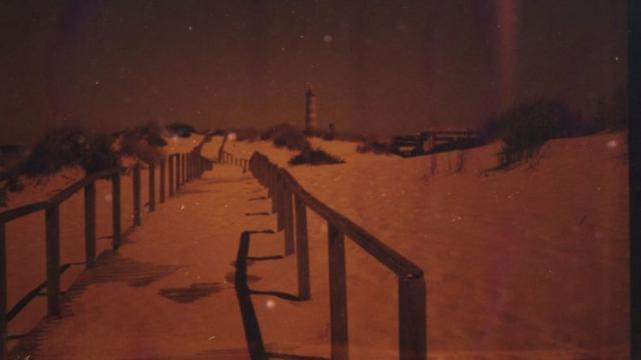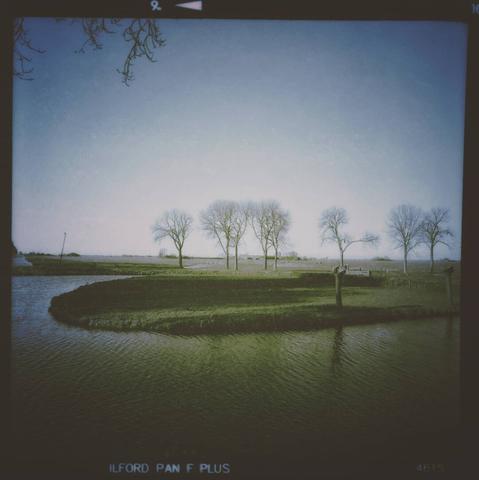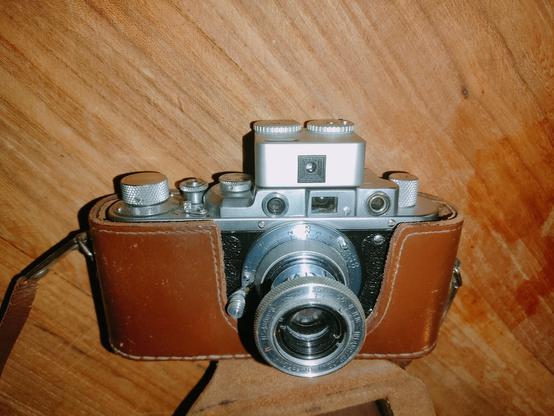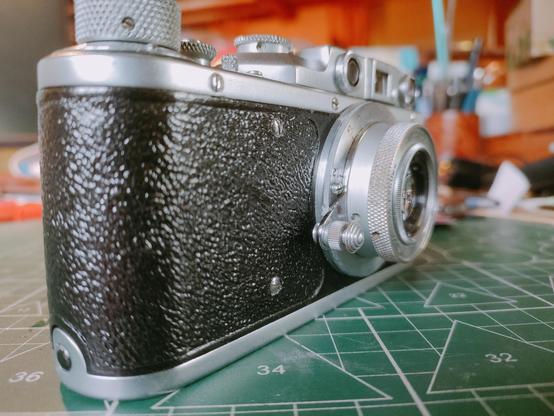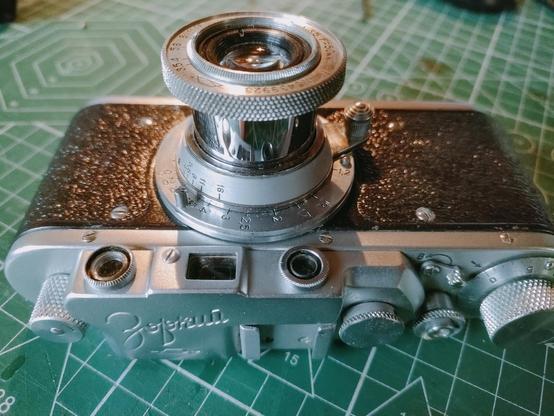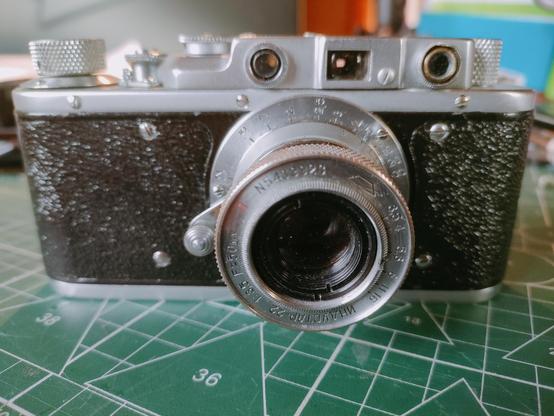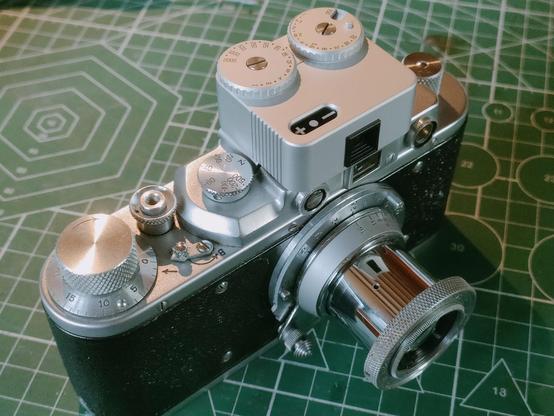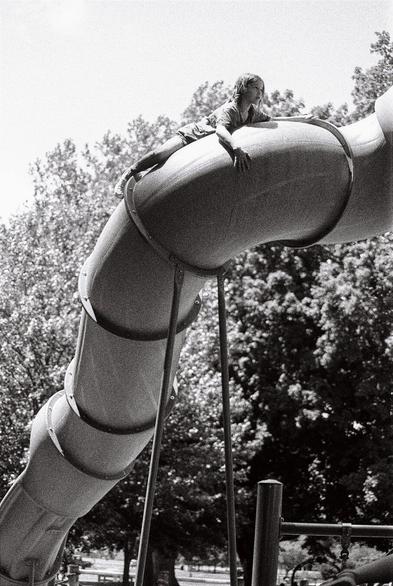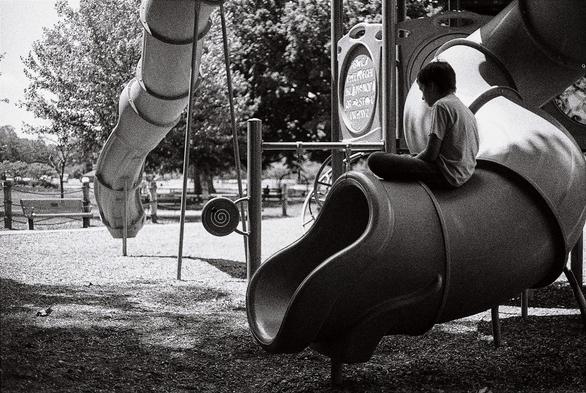Gearing up for the Crappy Commie Camera Party (Part VI): The Kiev 60, The Poor Man’s Pentax 67
There’s been a lot of talk* between my mutuals on BlueSky about the Pentax 67, the medium format behemoth SLR from Pentax. I would love one of these humongous beasties, but it’s a camera that’s way out of my budget, and I could only dream. That being said, there is an alternative, and since it’s the Crappy Commie Camera Party at the moment it’s a perfect opportunity to explore these alternatives.
The Kiev 60 is a medium format single lens reflex (SLR) camera manufactured in Ukraine between 1984 and 1999. Like many Soviet cameras, the Kiev 60 is a copy of another camera, in this case the East German Pentacon Six. It shares the l same lens mount as the Pentacon Six lenses, but from what I have learned is actually an improvement over that camera. The Kiev 60 uses 120 film, giving twelve square 6x6cm images per roll. It has a cloth shutter with speeds of 2s to 1/1000s (plus B). The actual production date of the camera can be determined from the first two numbers of the serial number, and mine was made in 1991.
The camera came fitted as standard with a Volna-3 MC, 80mm f2.8 lens (6 elements in 3 groups), with apertures between f2.8 and f22. The lens is fitted with a Pentacon Six breech mount and the lens can be removed by turning the ring on the front of the lens mount. The Kiev 60 comes with either a battery powered prism TTL viewfinder or a waist level finder. Mine came with the waist level finder, although the ‘loupe in the viewfinder had fallen off’, which might make focusing a little awkward, and I quickly added a prism finder. The lens and the prism finder were also from 1991, and I reckon that these were from the same kit on the Kameratore website, but sold separately.
Like most of the cameras that I get from the Kamerastore, it was in the ‘Not Passed’ category, meaning the camera is, ‘untested or tested, inspected, and found to have flaws that will affect typical use’. In this case, ‘the frame spacing is fairly narrow, so frames might overlap depending on the film type, and as mentioned before, ‘the loupe in the viewfinder has fallen off. Also, ‘the lens has oil on the aperture blades, which will affect exposure’, so that is something I will need to address or work around.
As it’s a medium format camera, the Kiev 60 is huge, dwarfing my previous behemoth of an SLR, the Zenit 11, and making my micro four-thirds mirrorless cameras look positively Lilliputian. It’s also heavy, coming in at nearly 2kg with the lens fitted, although this is still lighter than the Pentax 67, which I understand weighs about 2.5kg with lens. There are some issues that I’ll need to address, mainly the oil on the aperture blades, which makes changing the aperture quite sluggish. It’s likely that I’ll invest in a better condition lens, but I need to have a few trial runs with the Kiev 60 first.
The frame spacing issue is apparently quite a common occurrence with the Kiev 60, resulting in overlapping frames, especially at the start of the film. I’ve been reading about this, and I may have discovered two possible solutions, one complicated and involving taking the Kiev 60 apart, the other much simpler. According to an excellent article in 35mmc by Michael Elliott, Kiev 60 TTL: Medium Format SLR Review, the backing paper of Soviet-era 120 films back in the 1980s was thicker than on 120 films nowadays. This means that the camera, which is calibrated for Soviet films, will wind on slightly differently to modern films — not winding the film as far as it should — resulting in overlapping frames.
Elliott’s solution is quite ingenious. He proposes that ‘the thickness of the take-up spool [tells the camera] how far to advance for the next shot, [which] causes the advance to “over-advance” towards the end of the roll’ with modern films. So what he does is add, ‘a piece of [backing] paper … around 10cm long … to the front of the roll, and winding the start marker on the leader to the left edge of the silver ridge just past the start marker on the camera … [S]hooting 2 blank frames rather than 3, and then counting the next frame as a “real” frame yielded 13 well-spaced … frames, with no overlap’.
I cut a 15cm piece of backing paper from a used roll and overlapped this on a second spare backing paper roll so it projected out about 10cm. I then loaded this into the camera and wound the paper along until the ‘start’ marker lined up with the red indicator dot. In fact it went a little past because I did not realise that I could turn the take-up roll by hand to the marker. From the marker I wound the camera for three frames that would take it to the first frame (actually just a little further) and marked either side of the frame. Then I wound the film to the next frame, and marked the position of the frame. And so on.
It worked! There was no overlap of the frames. In fact, it looked like the later frames were a little too widely spaced, so I might not actually get 12 exposures out of a roll. However, what I’ll do with the first roll through the Kiev is to add the 10cm leader and then wind the film so the ‘start’ marker aligns with the red index mark on the film channel. Then I’ll close the cover and wind on until the counter shows ‘1’. After that I’ll expose the film as normal and see what comes out.
The issue with the loupe solved itself quite easily. After opening the camera, and checking out all of the bits and pieces (and really struggling to get the Kiev open the first time), I put the camera aside. Then, a few purs later, the Better Half appeared holding a small baggie: ‘Is this yours? she asked. It was the missing loupe lens, in a small zip bag. The bag had fallen down the side of the chair when I was opening the package. All that’s needed to keep it in place is a little contact cement. Problem solved.
The oil on the lens means that when I’m taking photographs at anything other than the widest aperture there’s a slight delay between pressing the shutter and the camera stopping down the lens to record the image. So in the meantime, what I’ve done is to get a cheap ND4 filter so that I can use the Kiev fully open at high shutter speeds. My rough tests with the Camera Meter app suggests that at f2.8 on a sunny day, with ISO 100 film I’ll need a shutter speed of about 1/1000s, the maximum shutter speed of the camera.
The first roll I’m going to put through this camera is an expired (c.2011) roll of Kodak Portra 160 NC that came with a Holga that I picked up a couple of years ago. I have no idea how this film was stored prior to my receiving it, probably in the box with the Holga, although I’ve stored it in the refrigerator since I’ve had it, which should at least reduce any further deterioration. To be on the safe side, I’ll expose the roll at ISO 25, and see what happens.
We took the Kiev 60 on a trip to Barra, and I had a lovely time walking the beach and the pier. With the Camera Meter app, an exposure of 1/500s at f2.8 was recommended and I used the Camera at that setting. After finishing the film in Vagueira, I unloaded the film back at home and was delighted to find that there were no signs of ‘fat’ rolls. A couple of days later I took the film to the lab.
Since I wasn’t sure what I would be getting from the Kiev, I opted for the development only option and brought the negatives home. On inspecting the negatives I was delighted to find that I had images! They were a little ‘thin’ but there was certainly something there. I’m not sure whether the underexpose was a result of the expired film or because I used it with the ND filter, but I was delighted that I got something.
Unfortunately, my attempted workaround for the overlapping frames wasn’t as successful, the first few frames were still overlapping. One the scans, I’ve shown the whole frame, so you can see what happened. I also got 12½ images out of the film, though the last was just me winding on the film at the end of the roll. But I have images, and I do love the Kiev-60. Who needs a Pentax 67, eh? I’ve posted the whole roll in an album on my Flickr, light leaks and all, if you want to see the rest of the images.
If you are on Mastodon, you can now follow this blog directly. Just go to Mastodon and follow the ‘Snapshot’ WordPress account at @keithdevereux.wordpress.com. All new posts will be automatically updated to your timeline.
*A few posts here and there that caught my eye.
#CrappyCommieCameraParty #Expired #Kiev60 #Mediumformat #Pentacon6 #Retro #Shittycamerachallenge #Slr #SovietCamera #Ukraine #Vintage

